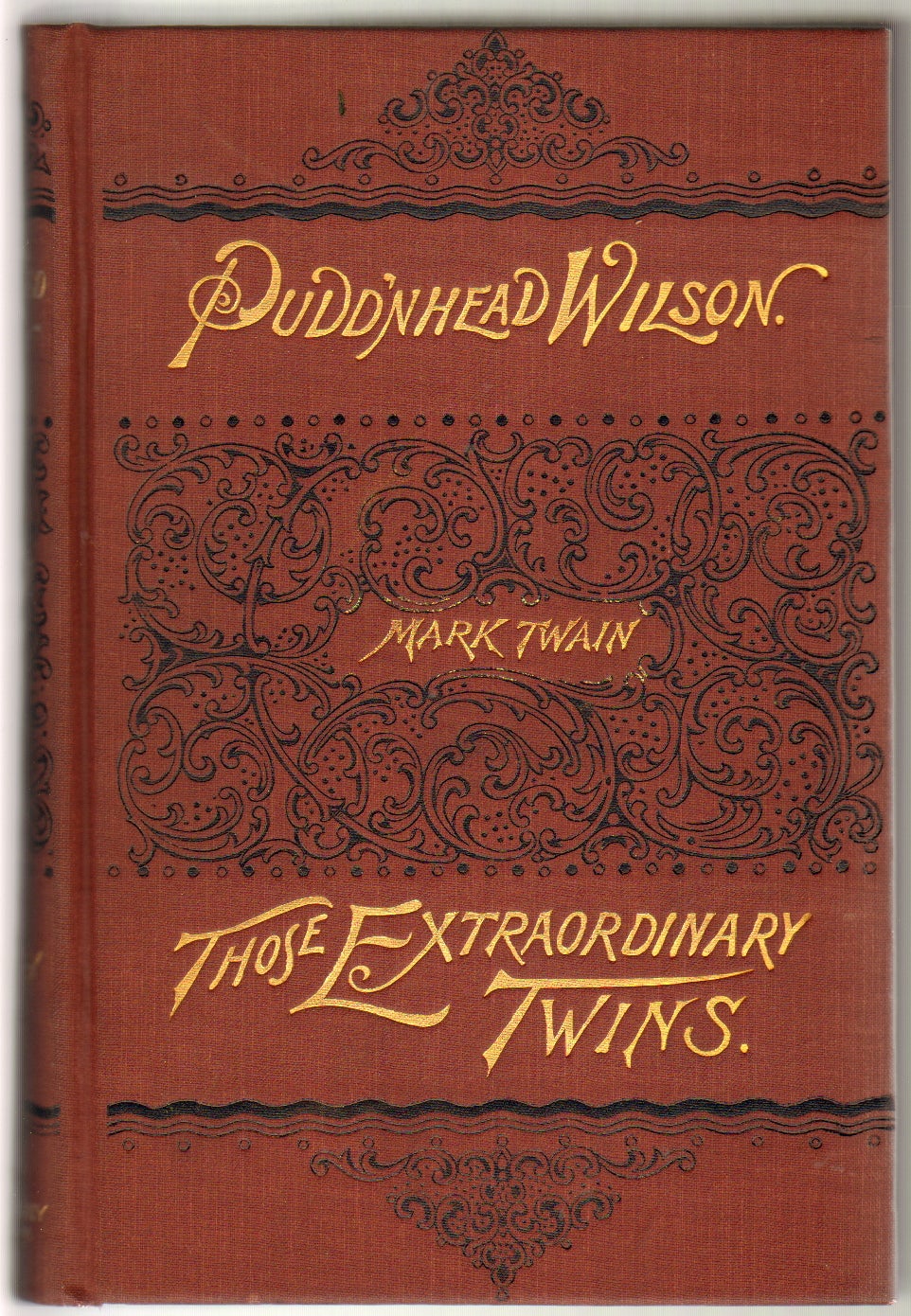As part of his conveying of reality into fiction, Twain
used events from real life as the foundations for his plots—even so far as
ripping news from the headlines as inspiration for his stories. The belief he held was that good fiction used
true stories as the foundation for fiction, he was adding an essence of
authenticity to creation. True stories
were sometimes written almost verbatim from their true origins, but for the
most part were used as a basis for the story and then completely revised so
that the resemblance to true events was less obvious. For instance, if the titular characters of Those
Extraordinary Twins were based upon an account of Siamese twins, Twain
separated them into identical twins for the sake of their individual mobility
within the plot.
Although Twain used stories from the news, he was not
wholly reliant on the sensational or beyond his personal experience. His sensational plot devices are usually
firmly grounded in scenes of everyday life: the extraordinary switching of two
infants in Pudd’nhead Wilson is set in the ordinary environment of a
small southern community.
Twain’s narrative style is like a newspaper
correspondent, reporting events and counter-events, and aiming to reach a
large, generalized audience. The fact
that Twain himself had worked as a printer may have influenced him to use this
reporter-type of writing. Such narrative
is more obvious in Twain’s short stories, which intersperse stories which Twain
himself created and those he collected in his travels—one of Twain’s most
notorious characteristics as a writer that it is so difficult to separate fact
from fiction.
Lastly, of Mark Twain’s realism was his ability to write
on topics important to contemporary American society. This included writing on racial issues, such
as in Pudd’nhead Wilson and The Adventures of Huckleberry Finn. The fact that Twain dealt with such
controversial issues shows how even in his fictional, created universe, the
questions and problems of real life were still present.
Puddn’head Wilson is an epitome of realist
literature in that it contains all three of these factors: the vernacular
representation, the storyteller voice in the narrative, and the contemporary
issues which pose questions of race through the main plot. Although the issue of race is the most
obvious in the novel, both the vernacular dialogue and the storyteller voice
play a significant part in how Twain’s realistic style is exhibited in the
work.
Vernacular spelling is most overt in the dialogue of
Roxy. This is especially important since
we are told that she is a slave who looks white, but her manner of speaking is
characteristic of black slaves and thus sets her apart. If Twain had not written her speech patterns
in a genuine way, the reader would not be able to distinguish between her and
Pudd’nhead Wilson; vernacular spelling is a necessary factor of Roxy’s characterization. For instance, if Roxy’s dialogue were
changed, then her conversation with a fellow slave would appear unnatural,
while her conversation with non-slaves would appear to be equal. This can be illustrated by simply changing
her vernacular dialogue into a more formal type:
Tom - “You’ll
give me a chance—you! Perhaps I’d better get down on my knees
now! But in case I don’t—just for
argument’s sake—what’s going to happen, pray?”
Roxy – “This is what is going to happen. I’m going straight to your uncle, and tell
him everything I know about you”
This excerpt directly precedes Roxy telling Tom that he
is the real Chambers, her son and a slave.
Tom sarcastically offers to get on his knees to beg her forgiveness, but
the irony of this is less pronounced when Roxy talks like an equal instead of a
subservient slave. Roxy’s vernacular
speech—which serves to demean her to her son—also shows how much she has
allowed him to control her.
Vernacular speech is also important in clarifying the
difference between Tom and Chambers, because Chambers (the real Tom) is also
classified by the way he speaks. After
the real Tom is restored to his rightful place as a rich man, his speech “was
the basest dialect,” showing that even this fortunate turn of events cannot
reverse a lifetime of experience.
The serious undertones are not unique to this novel, but
are a common trait in Twain’s other books.
Even one of his arguably more lighthearted works, The Adventures of Tom
Sawyer, is filled with moral lessons about responsibility and use of common
sense. This ethical concern was fully developed
in Tom Sawyer’s pseudo-sequel, Huckleberry Finn. Like Pudd’nhead Wilson, Huckleberry
Finn deals with concept of race, this time focusing on the perception of
slavery from a Southern boy raised to accept the enslavement of black people. But whereas Huckleberry Finn is
ambiguous as to the moral conclusion of the story—causing it to be banned
during Twain’s lifetime and continuing in controversy about whether it might
perpetuate racial stereotypes—Pudd’nhead Wilson takes a more egregious
stance against racism. To Twain, race
was as much a fiction, perhaps even more so, than the fictional literature he
wrote.
Mark Twain’s work stands apart as the quintessence of American
adventurousness and down-to-earth storytelling. Pudd’nhead Wilson shows that despite Twain’s characters
and setting not being of high society or written in the fanciest of English dialects,
he nevertheless managed to consider several profound issues of the culture in
which he lived.
For more about "vernacular" language in Mark Twain's writing, see Tania Alves' blog post: Huck's Vernacular throughout The Adventures of Huckleberry Finn
For more about "vernacular" language in Mark Twain's writing, see Tania Alves' blog post: Huck's Vernacular throughout The Adventures of Huckleberry Finn


No comments:
Post a Comment